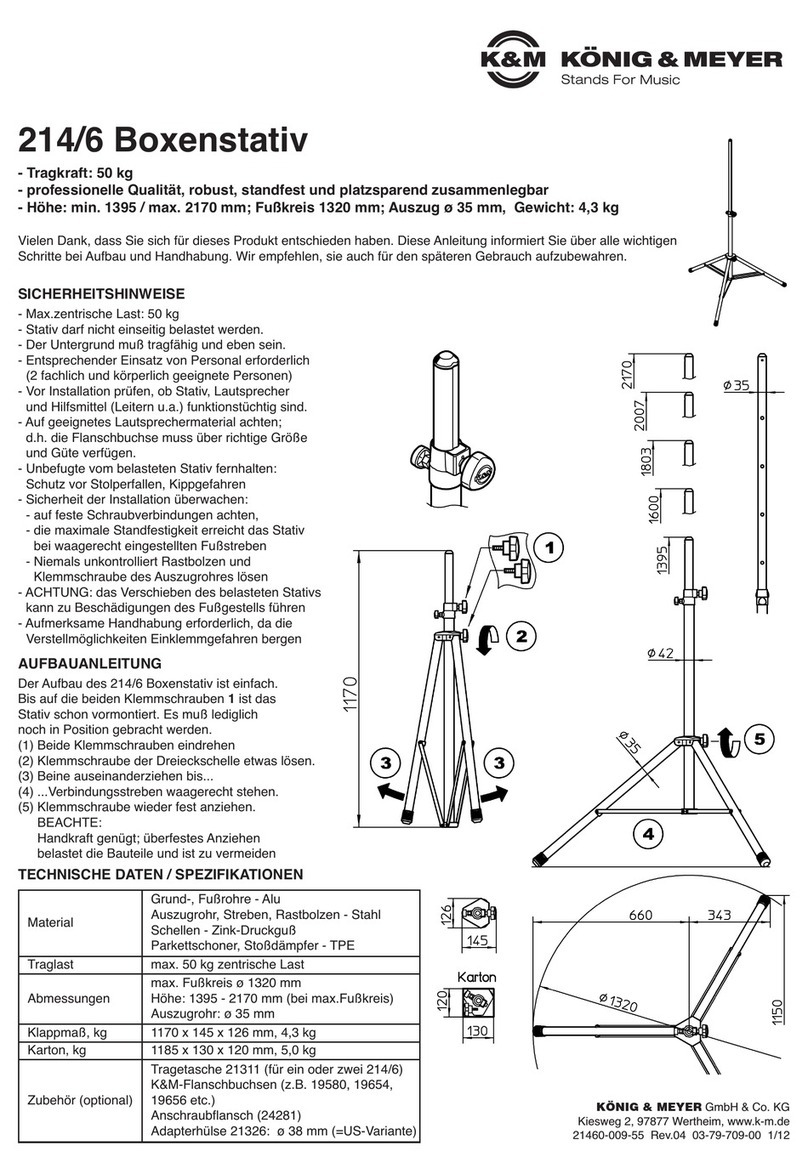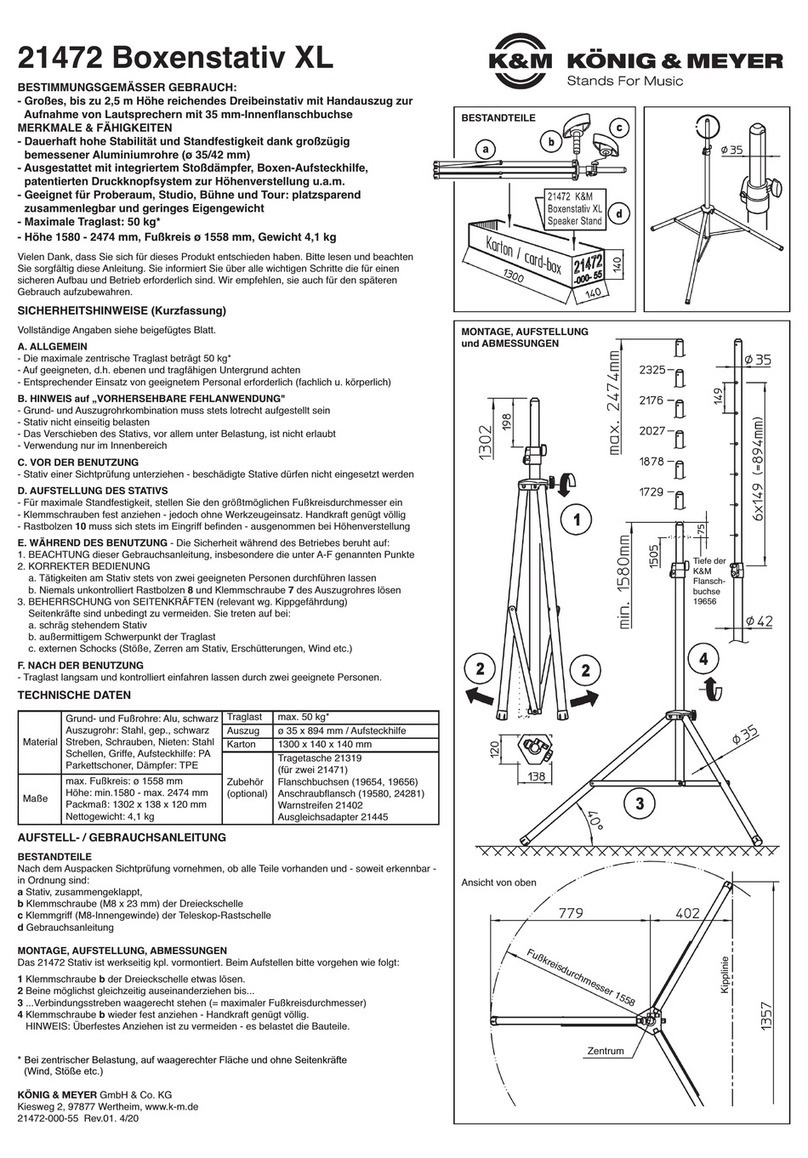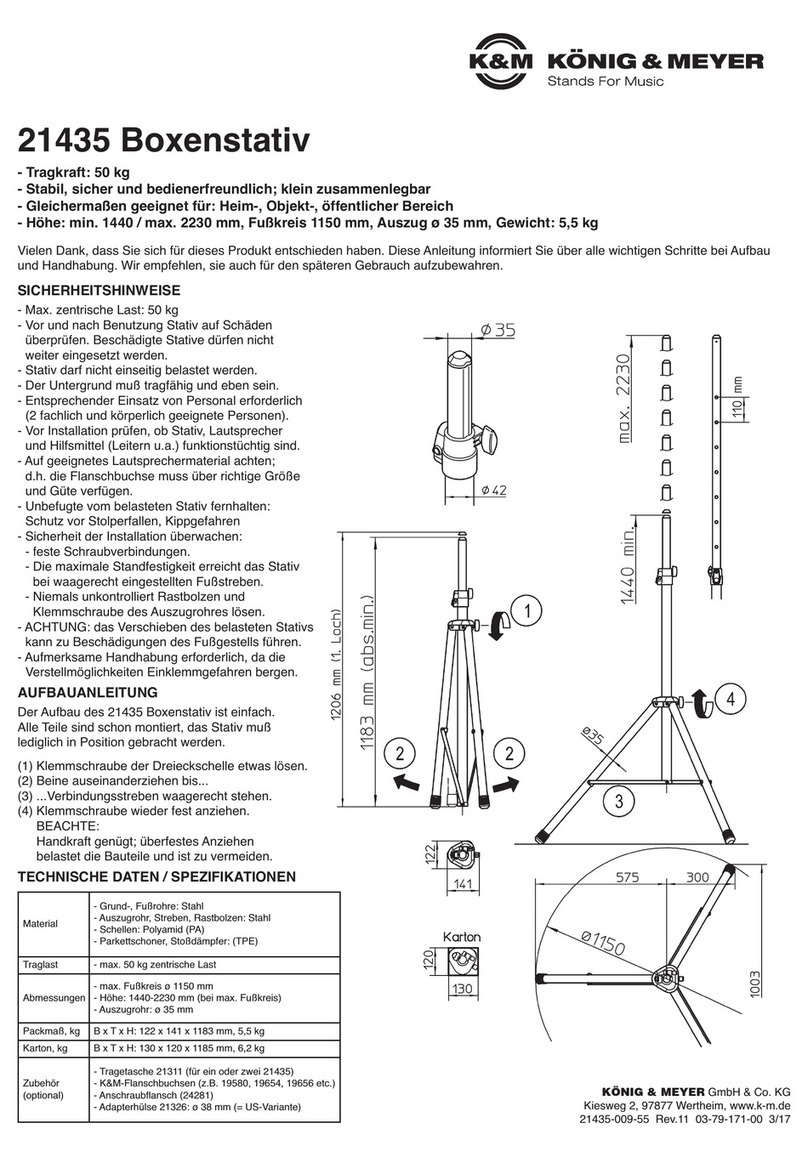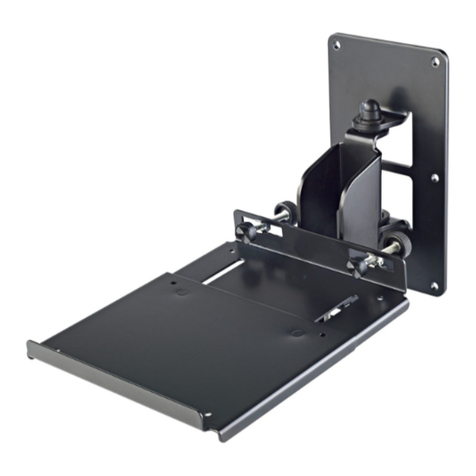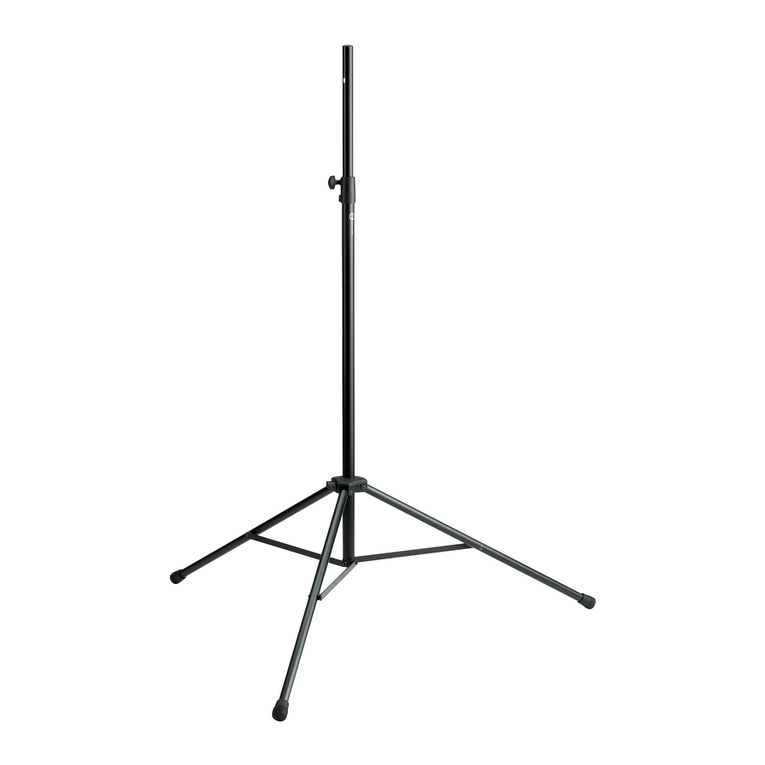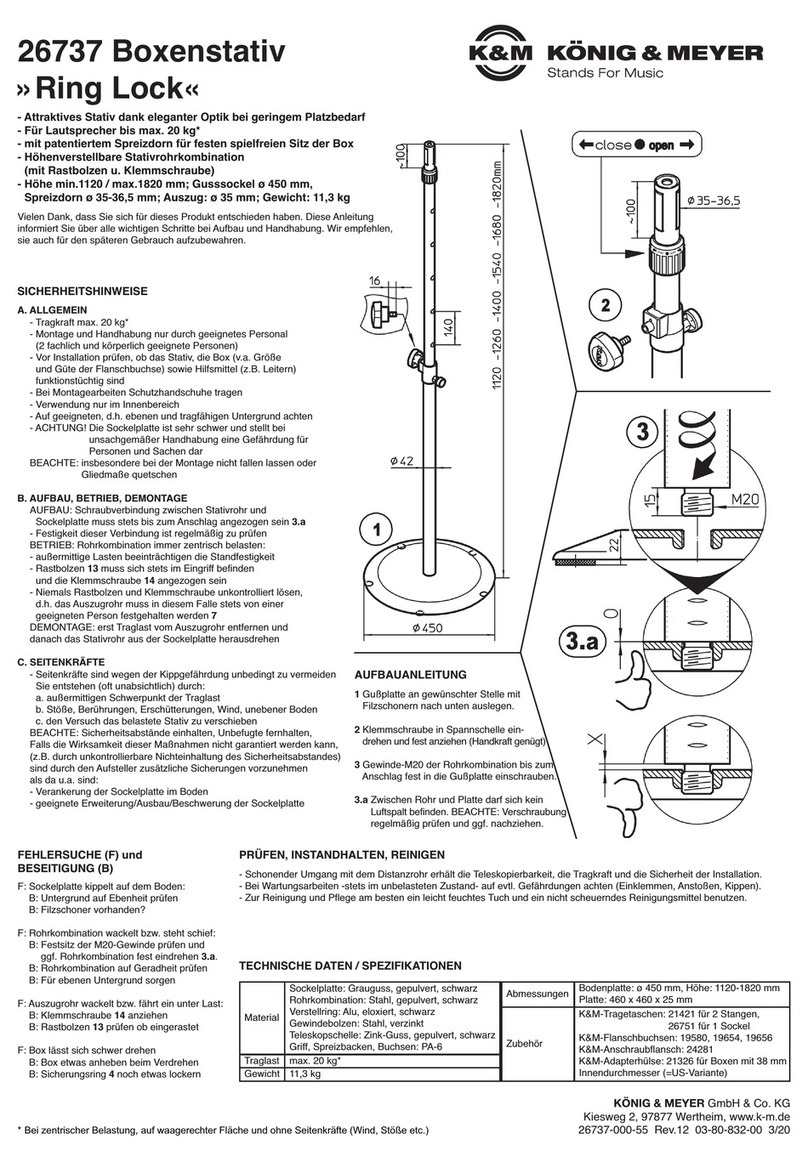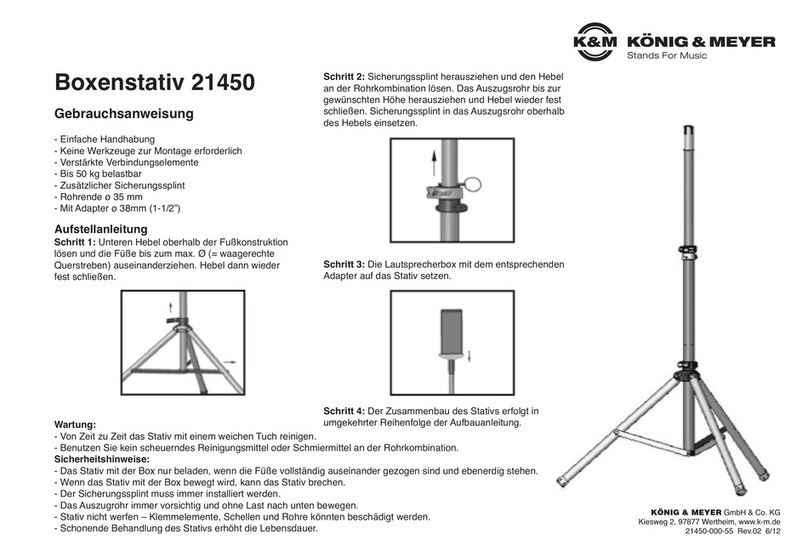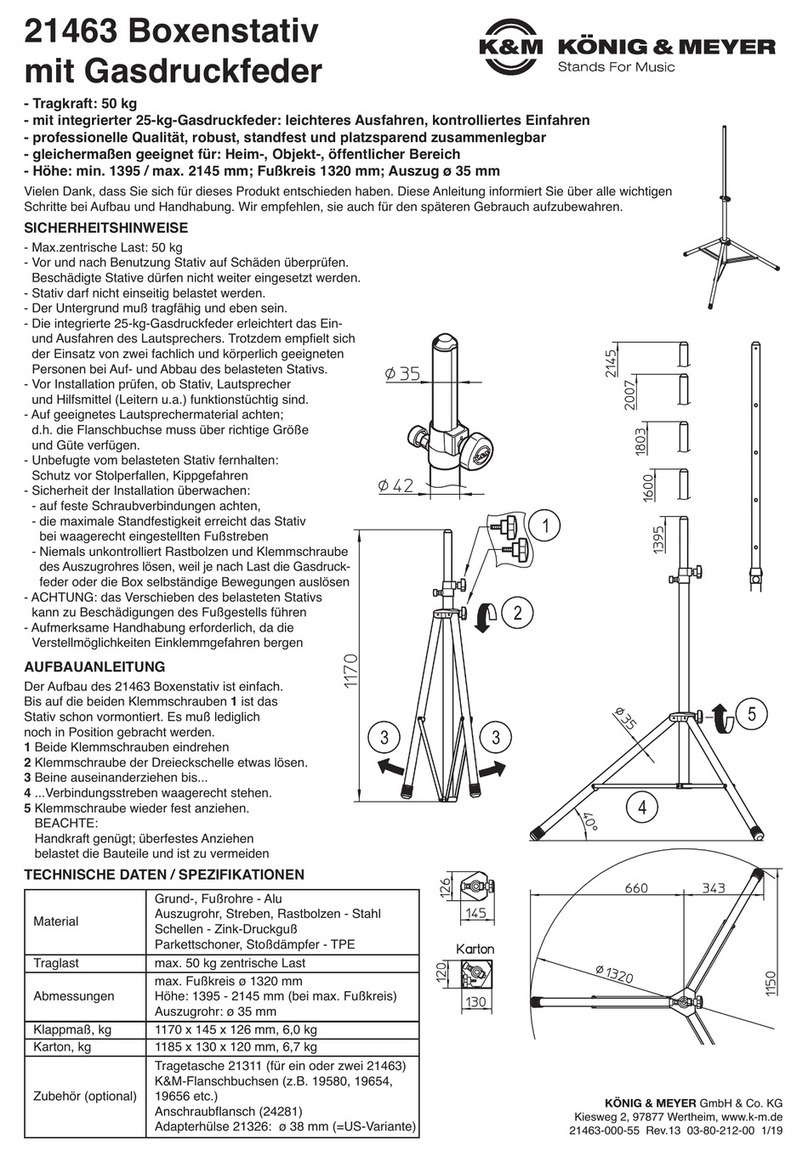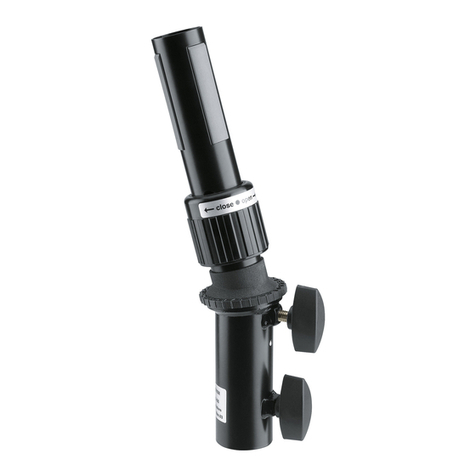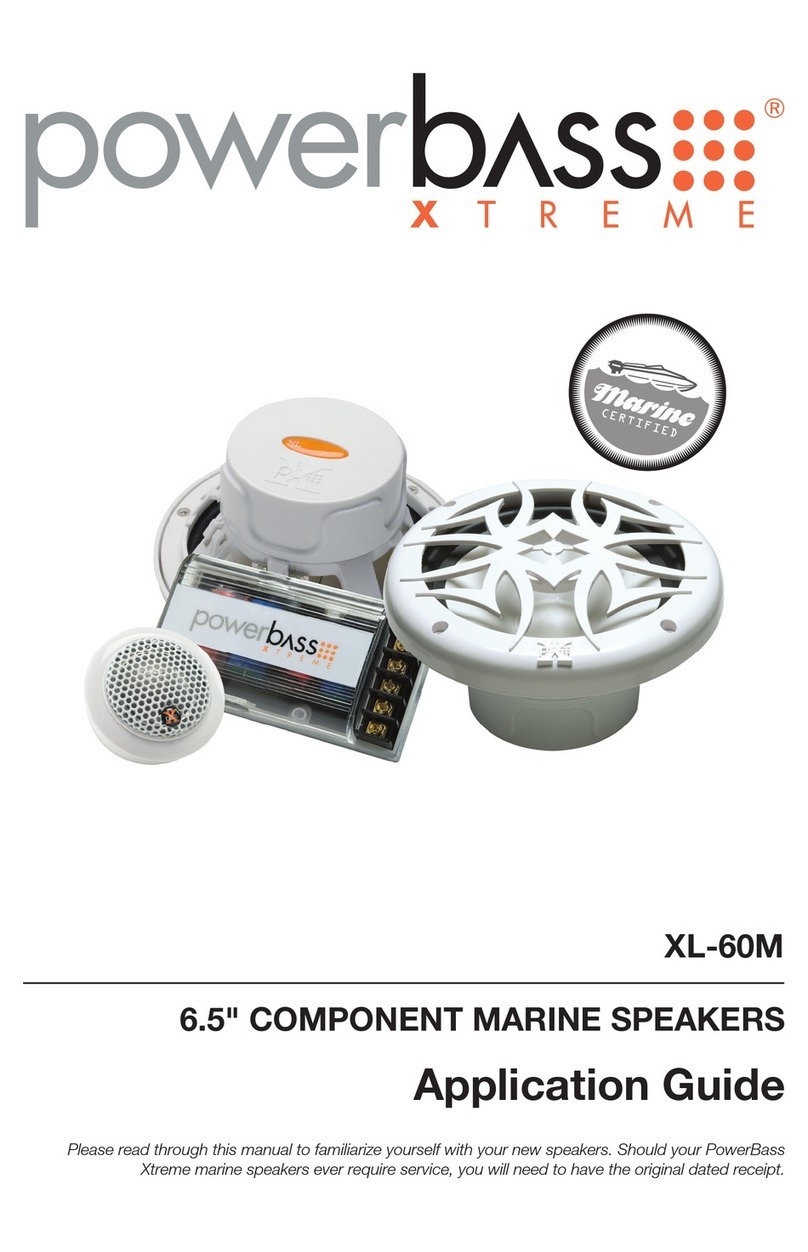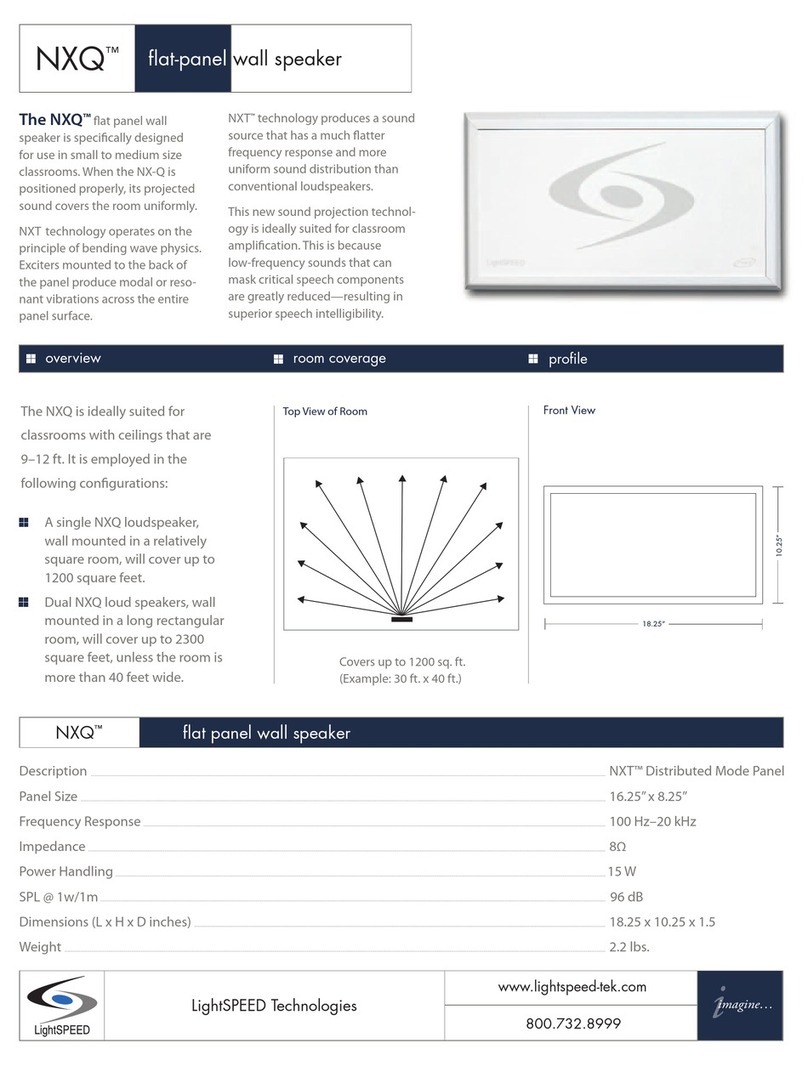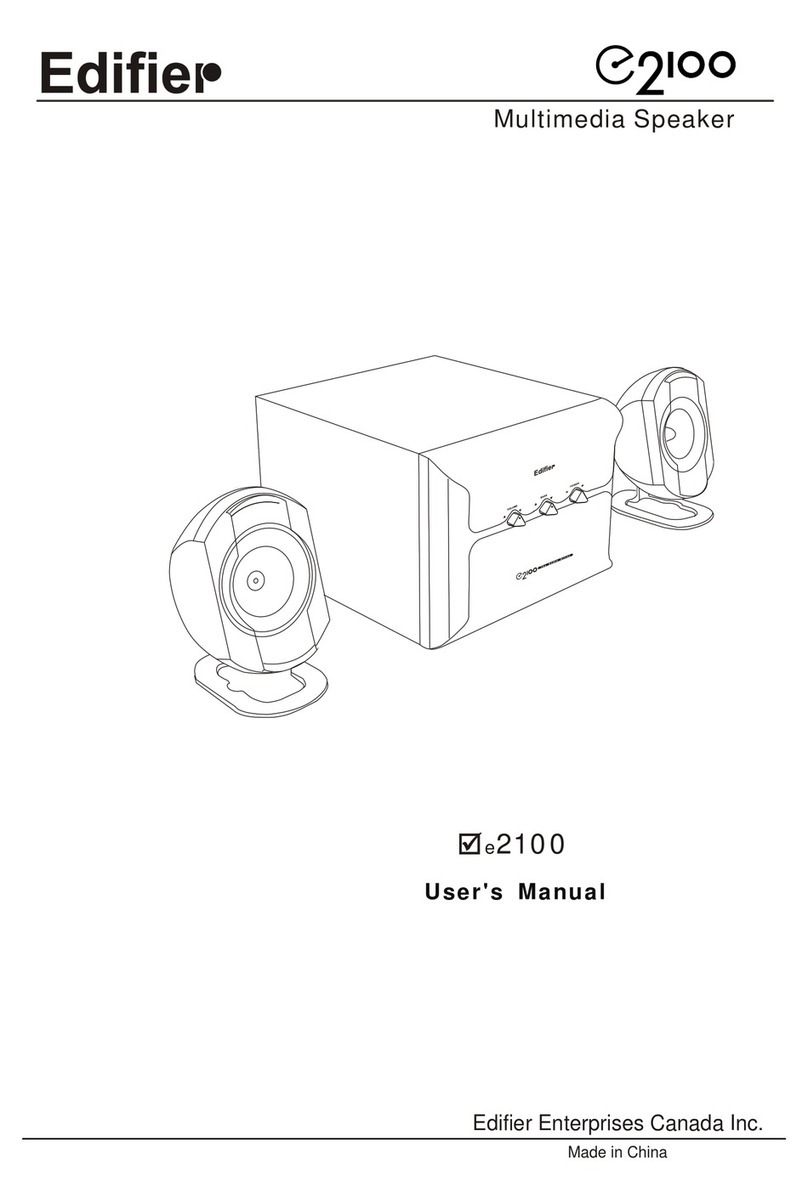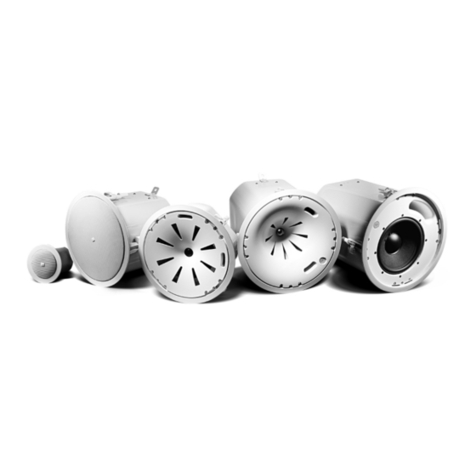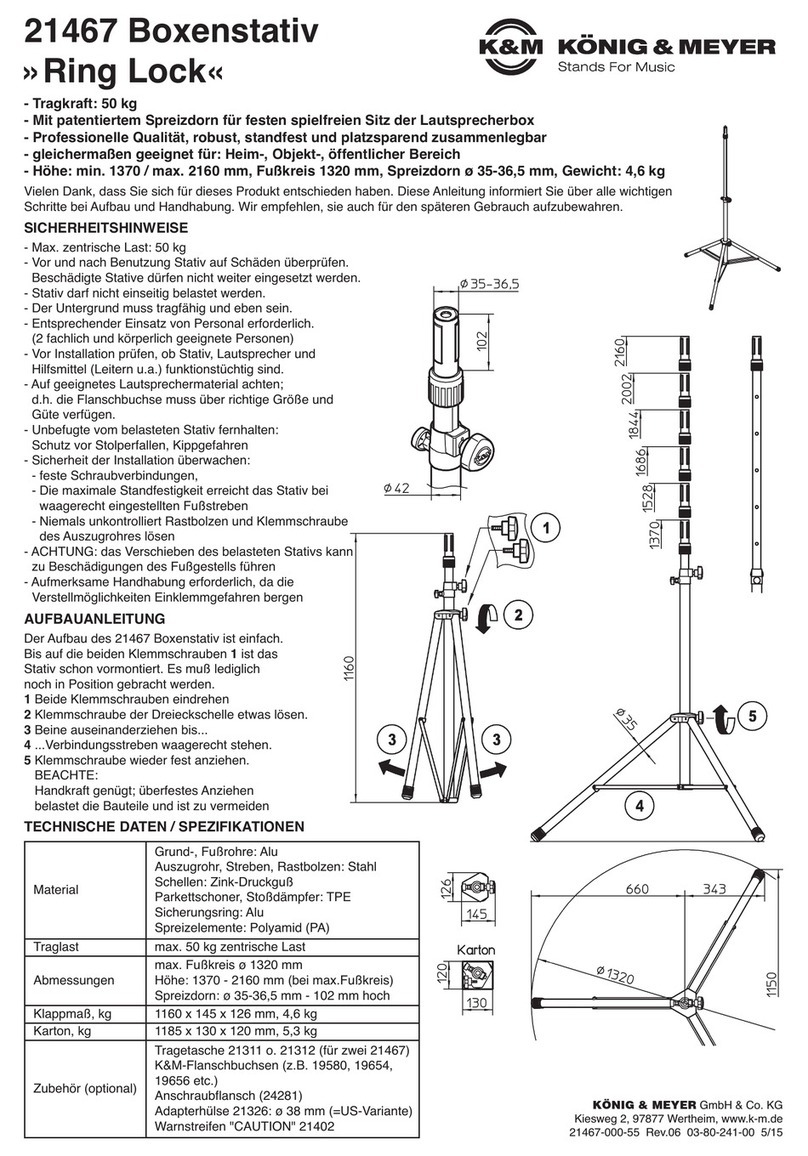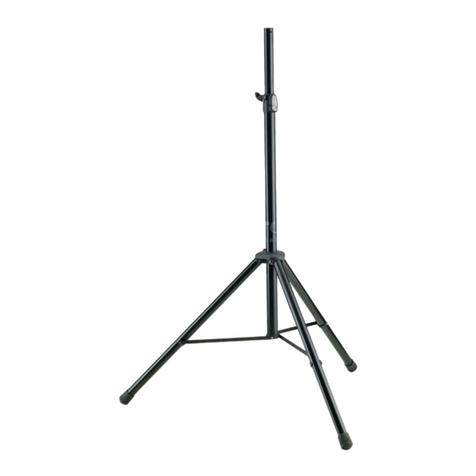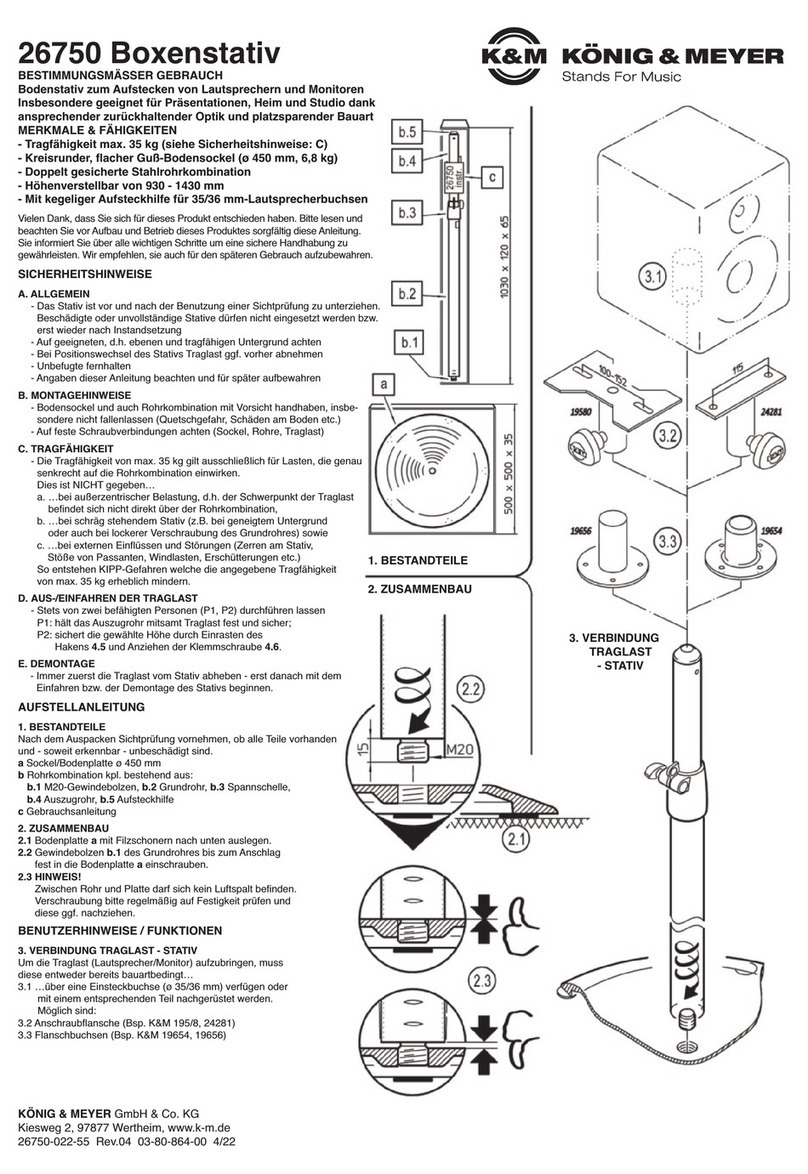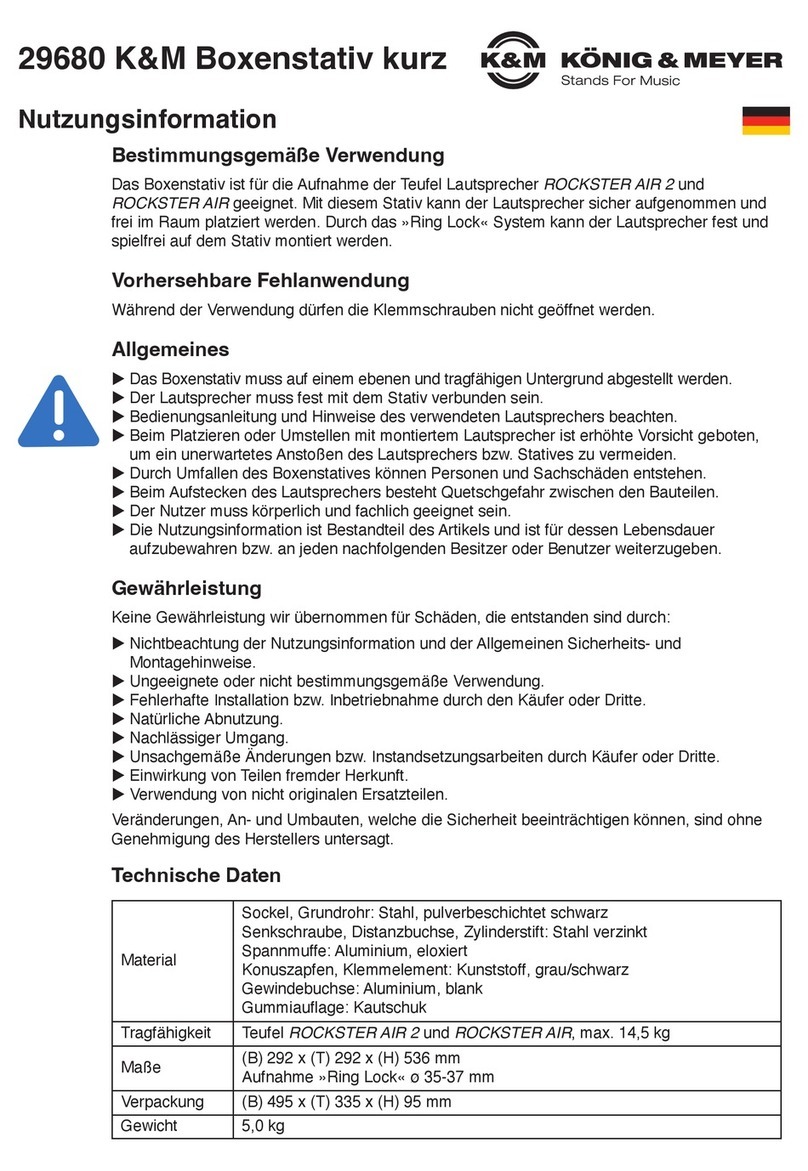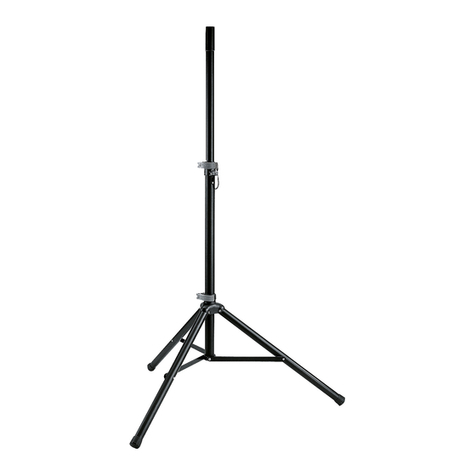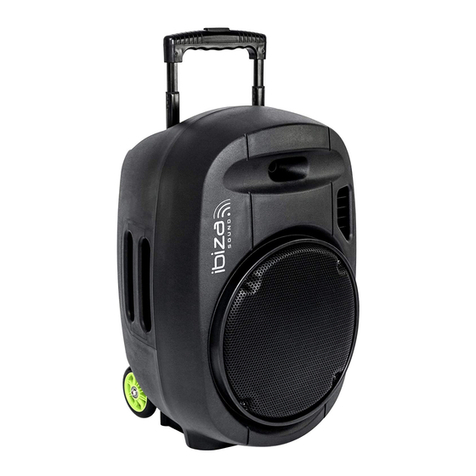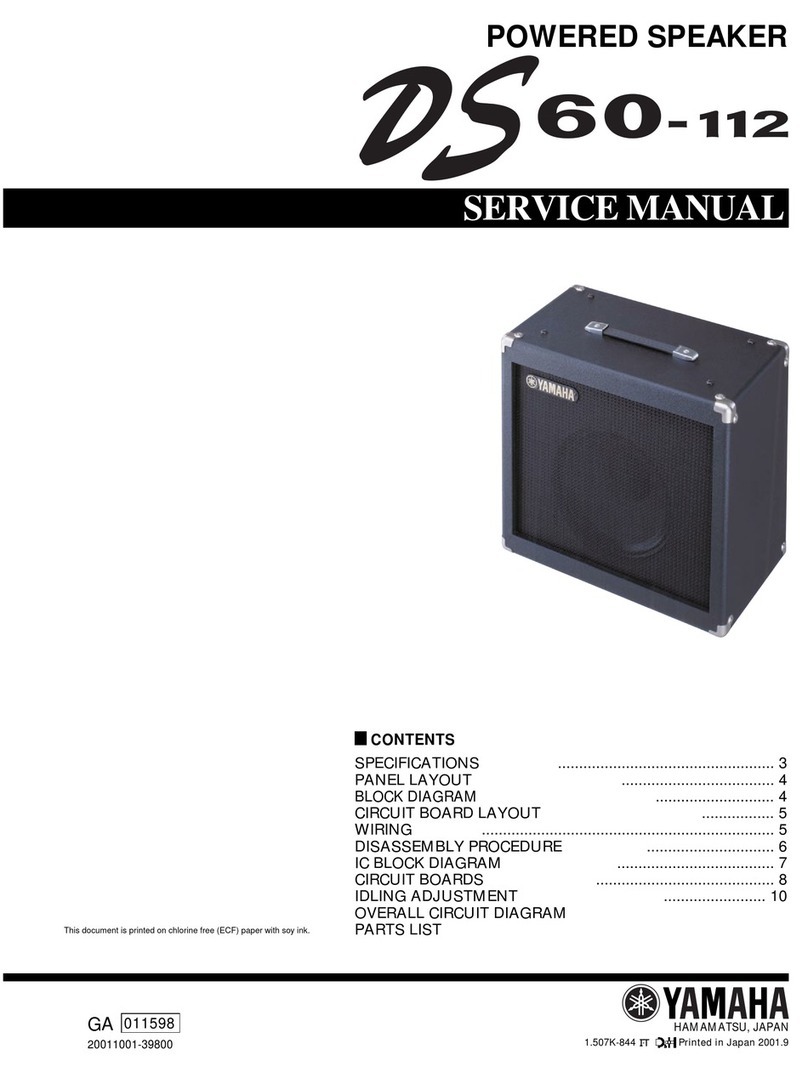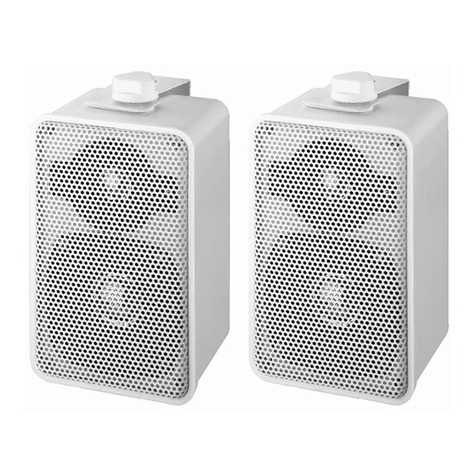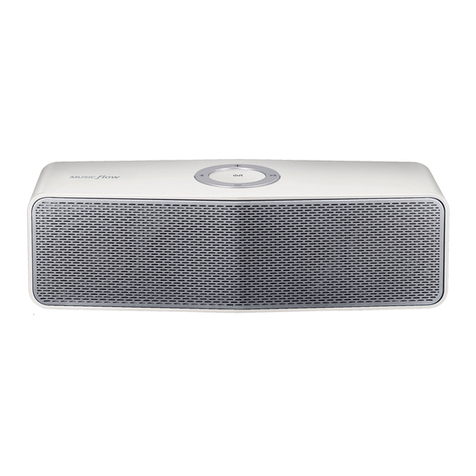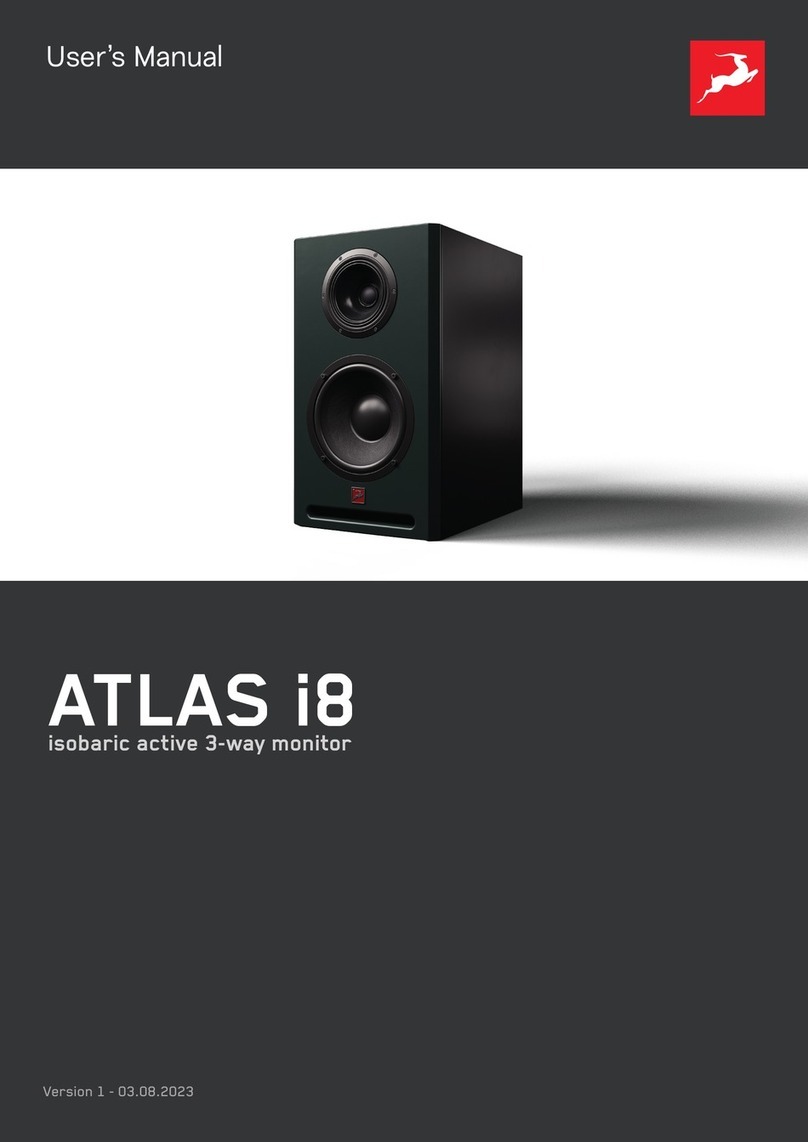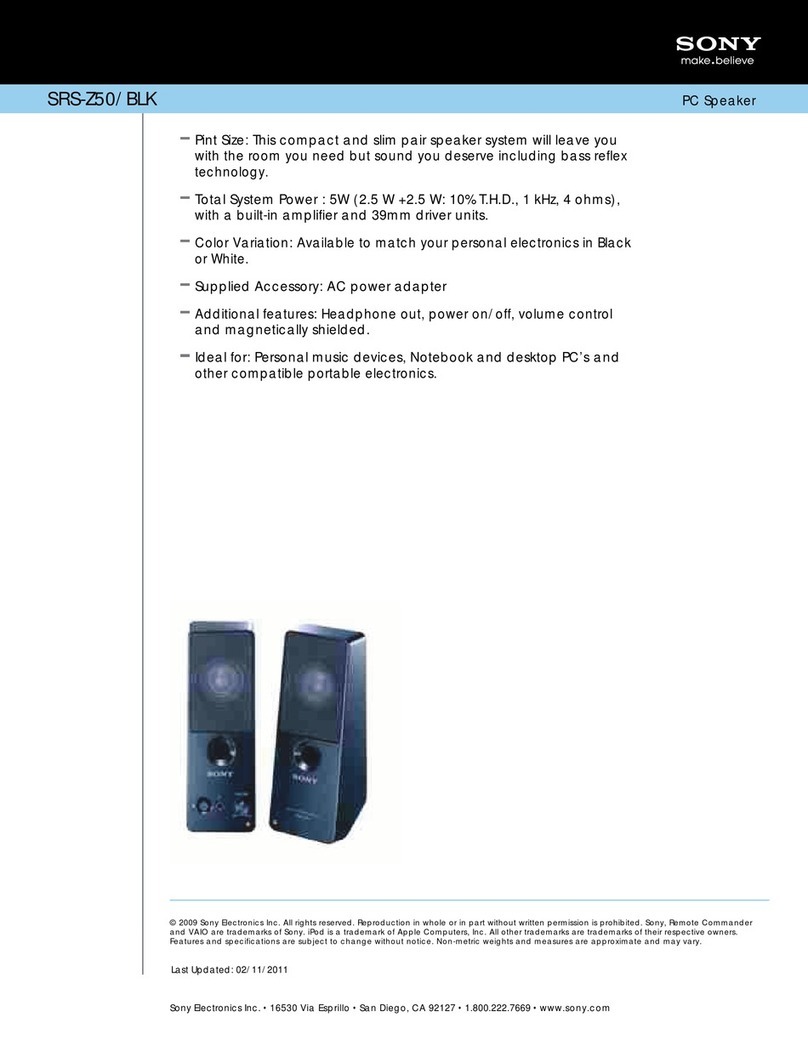21476 Boxenstativ »Ring Lock«
BESTIMMUNGSGEMÄSSER GEBRAUCH:
- Dreibeinstativ mit Handauszug zur Aufnahme von PA-Lautsprechern,
-z.B. den Teufel ROCKSTER AIR
MERKMALE & FÄHIGKEITEN
- Mit patentiertem Spreizdorn für festen spielfreien Sitz der Lautsprecherbox
- Professionelle Qualität. robust, standfest und platzsparend zusammenlegbar
- Gleichermaßen geeignet für Proberaum, Studio, Bühne, Tour - und Partyraum
- Maximale Tragfähigkeit: 50 kg*
- Höhe 1420 - 2200 mm, Fußkreis ø 1150 mm, Spreizdorn ø 35-36,5 mm,
-Gewicht 6,2 kg
SICHERHEITSHINWEISE (Kurzfassung)
Vollständige Angaben siehe beigefügtes Blatt.
A. ALLGEMEIN
- Die maximale zentrische Tragfähigkeit beträgt 50 kg*
- Traglast ist eine passende PA mit Buchse ø 35 mm (z.B. Teufel ROCKSTER AIR)
- Auf geeigneten, d.h. ebenen und tragfähigen Untergrund achten
- Entsprechender Einsatz von geeignetem Personal erforderlich (fachlich u. körperlich)
- Die Sicherheit des Betriebes beruht u.a. auf der Beachtung dieser Bedienungsanleitung,
-insbesondere der hier unter A-Ggenannten Punkte.
B. HINWEIS auf „VORHERSEHBARE FEHLANWENDUNG"
- Grund- und Auszugrohrkombination muss stets senkrecht (nicht geneigt!) aufgestellt sein
- Stativ nicht einseitig belasten, da es die Standfestigkeit bzw. Tragfähigkeit verringert
- Das Verschieben des Stativs, vor allem unter Belastung, ist nicht erlaubt
- Stativ vor Nässe und Feuchtigkeit schützen
C. VOR DER BENUTZUNG
- Stativ einer Sichtprüfung unterziehen - beschädigte Stative dürfen nicht eingesetzt werden
D. AUFSTELLUNG DES STATIVS
- Für maximale Standfestigkeit, stellen Sie den größtmöglichen Fußkreisdurchmesser ein
- Klemmschrauben fest anziehen - jedoch ohne Werkzeugeinsatz. Handkraft genügt völlig
- Rastbolzen 4.5 zur Fixierung des Auszugrohres muss sich stets im Eingriff befinden
-- ausgenommen bei Höhenverstellung
E. AUS-/EINFAHREN DER TRAGLAST (siehe Kapitel 4)
- Diese Tätigkeiten grundsätzlich von mind. zwei geeigneten Personen durchführen lassen
- Die "Erste Person" hat das Auszugrohr mit Traglast fest und sicher zu halten, während die
-"Zweite Person" die Sicherungselemente Rastbolzen und Klemmschraube jederzeit einsetzen
-kann, z.B. wenn die "Erste Person" nicht in der Lage sein sollte Rohr und Traglast zu halten.
F. WÄHREND DER BENUTZUNG
- Niemals unkontrolliert Rastbolzen 4.3 und Klemmschraube 4.2 des Auszugrohres lösen
- BEHERRSCHUNG von SEITENKRÄFTEN (relevant wegen Kippgefährdung)
-Seitenkräfte sind unbedingt zu vermeiden. Sie treten auf bei:
-a. schräg stehendem Stativ
-b. außermittigem Schwerpunkt der Traglast
-c. externen Schocks (Stöße, Zerren am Stativ, Erschütterungen, Wind etc.)
G. NACH DER BENUTZUNG
- Traglast langsam und kontrolliert einfahren lassen (siehe oben - E)
- Sichtprüfung vornehmen (siehe oben - C)
- Stativ sorgsam zusammenlegen und geschützt verstauen
AUFSTELL- / GEBRAUCHSANLEITUNG
1. BESTANDTEILE
Nach dem Auspacken Sichtprüfung vornehmen, ob alle Teile vorhanden und - soweit erkennbar -
unbeschädigt sind:
aStativ, zusammengeklappt,
bKlemmschraube (M8 x 23 mm) der Dreieckschelle
cKlemmgriff (M8-Innengewinde) der Teleskop-Rastschelle
dAuszugrohr mit »Ring Lock«-Mechanismus
eGebrauchsanleitung
2. MONTAGE, AUFSTELLUNG, ABMESSUNGEN
Das 21476 Stativ ist werkseitig komplett vormontiert. Beim Aufstellen bitte vorgehen wie folgt:
2.1 Klemmschraube bder Dreieckschelle etwas lösen.
2.2 Beine möglichst gleichzeitig auseinanderziehen bis...
2.3 ...Verbindungsstreben waagerecht stehen (= maximaler Fußkreisdurchmesser)
2.4 Klemmschraube bwieder fest anziehen - Handkraft genügt völlig.
2.4 HINWEIS: Überfestes Anziehen ist zu vermeiden - es belastet die Bauteile.
TECHNISCHE DATEN
Vielen Dank, dass Sie sich für dieses Produkt entschieden haben. Bitte lesen und beachten
Sie sorgfältig diese Anleitung. Sie informiert Sie über alle wichtigen Schritte die für einen
sicheren Aufbau und Betrieb erforderlich sind. Wir empfehlen, sie auch für den späteren
Gebrauch aufzubewahren.
KÖNIG & MEYER GmbH & Co. KG
Kiesweg 2, 97877 Wertheim, www.k-m.de
21476-000-55 Rev.03 03-80-632-00 9/21
Material
Grund-, Fuß- Auszugrohr: Stahl
Streben, Schrauben, Nieten: Stahl
Spannring: Aluminium
Schellen, Griffe, Spreizbacken: PA
Parkettschoner, Dämpfer: TPE
Maße
max. Fußkreis: ø 1150 mm
Höhe: min.1420 - max. 2200 mm
Packmaß: 1162 x 120 x 130 mm
Nettogewicht: 6,2 kg
Traglast max. 50 kg*
Auszug Spreizdorn: ø 35-36,5 mm x 102 mm
Karton 1200 x 145 x 60 mm
Zubehör
(optional)
Tragetasche 21311, 21312
Flanschbuchsen (19654, 19656)
Anschraubflansch (19580, 24281)
Warnstreifen 21402
Ausgleichsadapter 21445
Adapterhülse 21326: ø 38 mm (US)
* Bei zentrischer Belastung, auf waagerechter Fläche und ohne Seitenkräfte (Wind, Stöße etc.)
2. MONTAGE, AUFSTELLUNG
2. und ABMESSUNGEN
1. BESTANDTEILE
Ansicht von oben
Fußkreisdurchmesser 1150
Kipplinie
Zentrum








